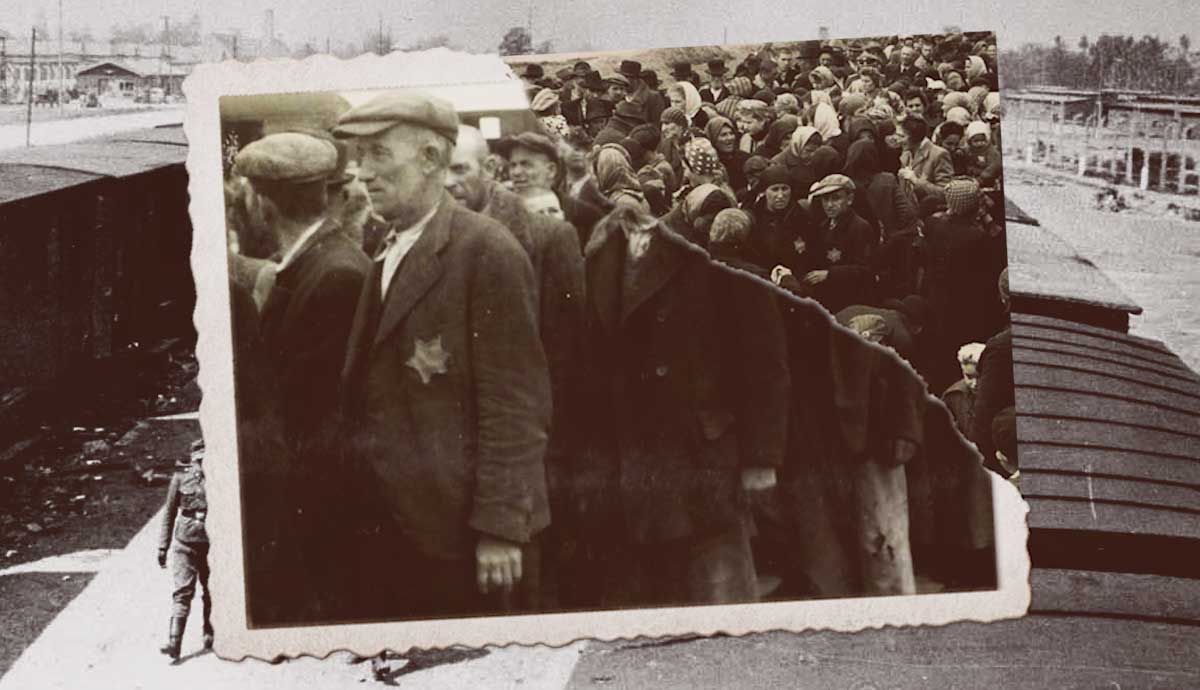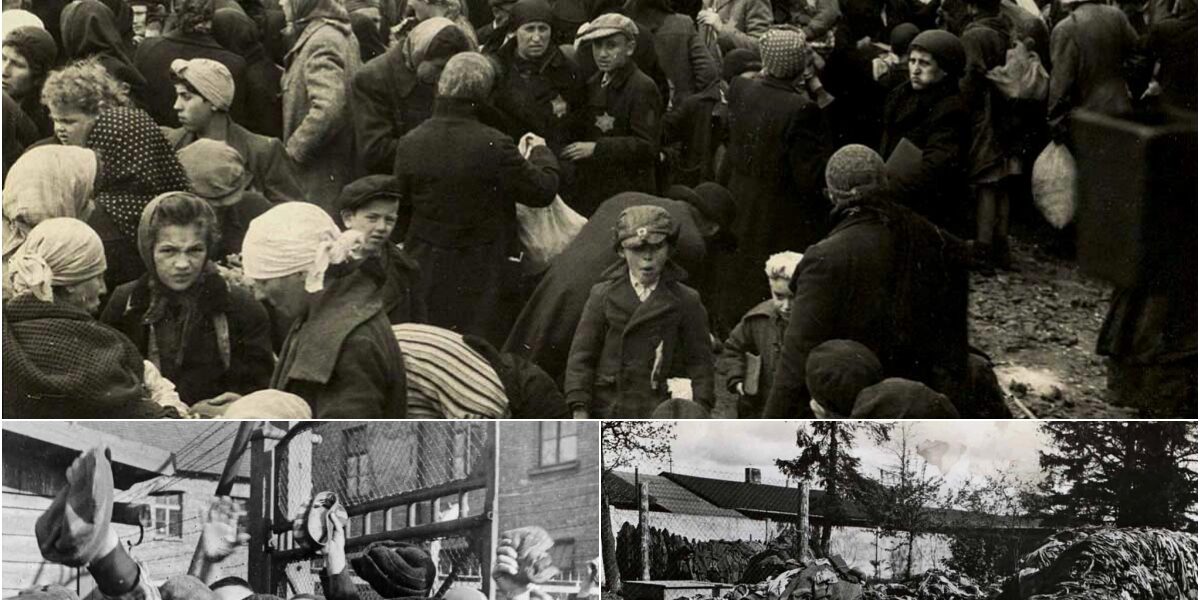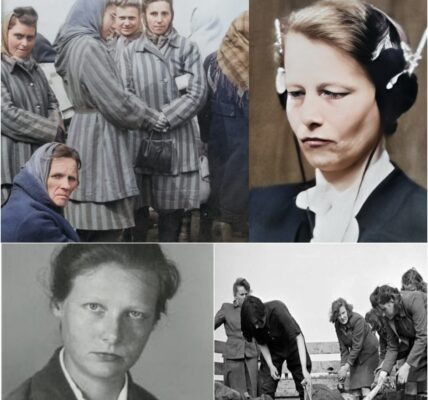LIVING AMONG THE DEAD: The SECRET AND GRUESOME Work of the Sonderkommando in the Nazi Death Camps
The Holocaust remains one of humanity’s darkest chapters, and within its grim history lies the harrowing story of the Sonderkommando—predominantly Jewish prisoners forced into the unimaginable role of aiding in the Nazi extermination process. Tasked with directing victims to gas chambers, disposing of bodies, and erasing traces of genocide, these prisoners worked under the brutal oversight of SS guards in death camps like Auschwitz-Birkenau. Selected for their physical strength, the Sonderkommando were both victims and eyewitnesses to the Nazis’ systematic murder of Jews, Poles, Roma, and Soviet prisoners. This article delves into their grueling responsibilities, the selection process, the camps they worked in, their treatment, and their acts of resistance, offering a sobering look at their role in the Holocaust. For readers seeking to understand the depths of human endurance amid unimaginable horror, the Sonderkommando’s story is a testament to survival and defiance against a monstrous regime.

The Grim Role of the Sonderkommando
The Sonderkommando were prisoner units in Nazi death and labor camps assigned the horrific task of facilitating mass murders. Their duties included guiding new arrivals—often unaware of their fate—to undress and enter gas chambers, then handling the aftermath: removing bodies, cutting hair, extracting gold teeth, and burning corpses in crematoriums. At Auschwitz-Birkenau, survivor Dario Gabbai estimated 1,200 Sonderkommando worked in groups of about 100, each assigned specific tasks in the killing process. These prisoners operated under constant SS surveillance, forbidden from warning victims or resisting orders, under penalty of immediate execution.

Jews waiting for the selection process to begin upon arrival at Auschwitz, via Yad Vashem, Jerusalem
The Nazis relied on the Sonderkommando to maintain the efficiency of their “Final Solution,” the systematic genocide of Jews and others. This assembly-line process saw thousands of prisoners processed daily, with up to 3,000 packed into gas chambers at a time, killed using carbon monoxide in Operation Reinhard camps or Zyklon B at Auschwitz. The Sonderkommando’s role was not only physically exhausting but psychologically devastating, as they were forced to participate in the murder of their own people while clinging to survival. Their accounts, often recorded post-liberation, remain critical evidence of the Holocaust’s atrocities.
Selection and Survival: A Brutal Calculus
Upon arrival at death or labor camps, prisoners faced immediate separation based on gender, age, and physical condition. The elderly, young, or weak were typically sent to gas chambers, while those deemed fit for labor were selected for Sonderkommando units. This selection was ruthless—only the physically capable were spared immediate death to endure grueling work. However, the harsh conditions, meager rations, and relentless labor meant most Sonderkommando weakened within months, leading to their replacement every six months. The Nazis’ intent was clear: keep the killing machine running while ensuring few survived to expose their secrets.

The Sonderkommando’s role made them key eyewitnesses to the Holocaust, but survival came at a steep cost. Many chose the role to stay alive, hoping to protect family members or gain slightly better food and clothing. Yet, the Nazis ensured their silence by regularly executing units to prevent leaks about the genocide. Despite this, some Sonderkommando, like those who documented their experiences, provided invaluable testimony that later exposed the Nazis’ crimes to the world.
The Killing Centers: Factories of Death
The Sonderkommando primarily worked in death camps, with Auschwitz-Birkenau being the largest and most notorious. Auschwitz II (Birkenau) was the epicenter of mass murder, equipped with four crematoriums where Sonderkommando processed bodies. Other killing centers included Chelmno, Sobibor, Belzec, and Treblinka, established under Operation Reinhard to exterminate Jews in German-occupied Poland. Chelmno, operational from December 1941, pioneered the use of poisonous gas, while the others, launched in 1942, killed approximately 1.7 million victims. These camps operated like grim factories, with Sonderkommando handling tasks from sorting victims’ belongings to disposing of ashes.

Beyond death camps, the Nazis ran over 44,000 camps, including labor and concentration camps like Dachau, operational from 1933 to 1945. While some, like Dachau, had crematoriums for mass murder, others focused on forced labor or imprisonment. The Sonderkommando’s tasks in death camps were uniquely gruesome, sparing SS guards the psychological toll of handling corpses. This calculated division of labor ensured the Nazis’ killing machine ran smoothly while dehumanizing both victims and the Sonderkommando forced to carry out their orders.
Treatment and Conditions: A Cruel Hierarchy
Sonderkommando received marginally better treatment than prisoners sent directly to gas chambers, but their lives were still marked by brutality. They were housed in separate, overcrowded barracks with minimal improvements over time, such as basic beds. Meals were slightly better—grain- or herbal-based drinks for breakfast, watery soup for lunch, and sparse bread with margarine or sausage for dinner—but insufficient to sustain the grueling labor. Some took clothing from victims’ piles to survive the camps’ harsh conditions, a grim necessity in a world of scarcity.

SS guards varied in their treatment: some were less cruel, but most were abusive, enforcing strict control to prevent resistance. The Sonderkommando’s physical and mental toll was immense, with many falling ill or breaking down under the weight of their tasks. Units like Sonderkommando 1005, formed in 1942 to erase evidence of mass shootings by burning exhumed bodies, faced particularly horrific conditions. Despite their role, the Sonderkommando were prisoners first, subject to the same dehumanization and constant threat of death as others.

Prisoners at Auschwitz celebrating as they are being liberated, 1945, via United States Holocaust Museum, Washington DC
Resistance and Resilience: The Auschwitz Revolt
Despite the overwhelming oppression, the Sonderkommando showed remarkable courage through acts of resistance. The most notable was the October 7, 1944, revolt at Auschwitz-Birkenau, where female Sonderkommando members Ala Gertner, Ester Wajcblum, and Regina Safirsztain smuggled gunpowder from a nearby factory. Passed to others via Róza Robota, the gunpowder was used to craft grenades from sardine cans, alongside makeshift knives. The uprising damaged a crematorium beyond repair, disrupting the killing process, but SS guards swiftly crushed the revolt, killing over 400 prisoners.

Three Sonderkommando of the 1005 unit standing next to a machine used to dispose of corpses’ bones in the Janowska concentration camp, 1944, via United States Holocaust Memorial Museum, Washington DC
The women involved were tortured for months before their public execution by hanging in January 1945, just weeks before Auschwitz’s liberation. This act of defiance, though costly, stands as a powerful testament to the Sonderkommando’s refusal to be complicit without resistance. Their bravery, alongside those who documented their experiences, ensured the world would learn the truth about the Holocaust’s horrors.

Auschwitz-Birkenau gas chamber and crematorium IV by SS guard, 1943, via Auschwitz-Birkenau State Museum, Oświęcim
The Sonderkommando’s story is a haunting chapter of the Holocaust, revealing the unimaginable choices forced upon Jewish prisoners and others in the Nazis’ death camps. Tasked with the gruesome work of facilitating mass murder, they were both victims and vital witnesses, their survival a fleeting act of endurance amid relentless horror. From the killing centers of Auschwitz and Treblinka to the courageous revolt of 1944, their experiences expose the depths of Nazi cruelty and the resilience of those who resisted. For readers, this history is a stark reminder of the human cost of hatred and the power of defiance. As we reflect on the Sonderkommando’s legacy, let their stories fuel our commitment to never forget—and to ensure such atrocities are never repeated.




